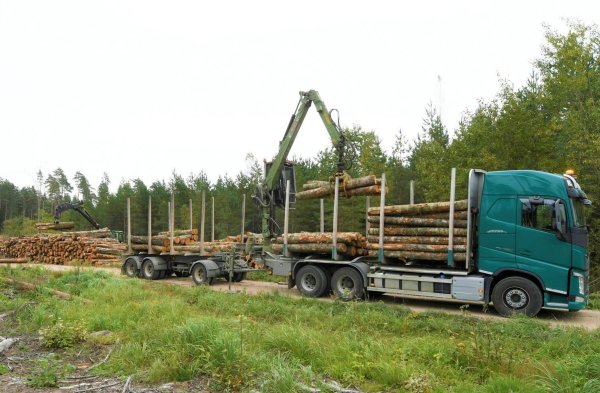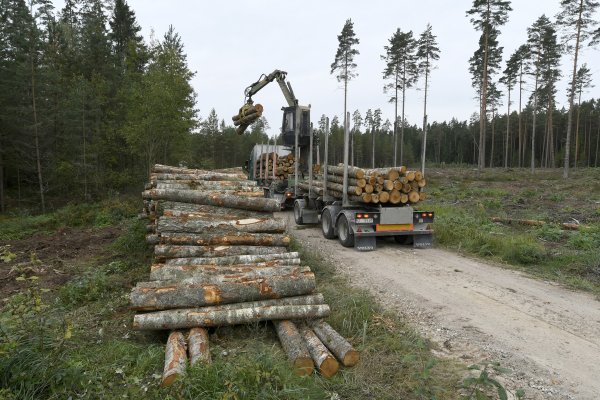Forestry Sector has Significantly Reduced Its Carbon Dioxide Emissions
Thanks to the wood production, supply and transport planning tools, within six years JSC “Latvia's State Forests” (LVM) has succeeded in reducing the amount of CO2 or carbon dioxide emissions caused by the transportation of timber by as much as 24%.
LVM is working hard to reduce its CO2 emissions. One such activity is planning and managing the transportation of timber. Since 2013, LVM has managed to reduce the number of kilometres travelled in one ride by 49 kilometres.
Forestry works are planned at one location to reduce any unnecessary journeys; the company’s transport routing programme, which allows to optimize timber transport routes, also helps to reduce CO2 emissions.
“Over the past six years, LVM has successfully optimized its wood production, supply and transport planning. Firstly, felling site planning is based on optimization results that show where to produce specific products for a particular buyer in order to reduce the overall transportation distance from the felling site to clients. This can also be called “flow planning”, as a result of which it is clear from which felling site and to where timber will be delivered,” tells Mārtiņš Krūze, LVM Logistics Manager.
Secondly, daily routing at the level of each timber carrier's specific load is done with the help of optimization IS, resulting in specific routes: which route, which timber carrier, and in what order timber will be transported. This freight optimization takes into account certain factors when planning a load without IS support, such as the availability of roads at a given time, weather conditions, timber volumes at all available warehouses, time needed to remove timber, and more.
As a result, the optimum procedure of freight transportation is created so that you do not drive an extra kilometre while respecting the interests of all parties. “One such example is that a timber truck can use the most efficient route without a need to travel anywhere for the drivers to change. That is to say, LVM service providers do not drive an extra mile to change but the change of drivers takes place “on the road” so to say. The driver of the timber truck who arrives to his/her shift by car drives to the truck, while the driver of the timber truck, who ends his/her shift, goes home by the same car,” tells the LVM Logistics Manager.
An option to reduce the environmental impact of the company
Often, the CO2 footprint is also called the fossil fuel footprint, since fuel consumption is a leading contributor to emissions. This means that using less fuel in the course of economic activities will leave the company with a smaller environmental footprint. In wood production, CO2 emissions can be reduced through felling site planning, using less fuel consuming techniques, maintaining a training system for harvester and forwarder operators, thereby increasing productivity, and providing bonuses to service providers for both the use of the latest technologies and increasing productivity.
Approximately 47% of the cost of the wood transportation service is fuel costs. By reducing the average distance of timber transportation by 1 kilometre, about 300 thousand euros are saved per year.
By reducing the annual average transportation distance by 1 kilometre without increasing the total volume of wood transported, it is possible to reduce CO2 emissions by 368.7 tonnes, which represents 1% of the total amount of wood transport emissions currently. At the same time, any action aimed at reducing the transportation distance or reducing fuel consumption also has a positive impact on CO2 emissions.
Carbon footprint is a carbon dioxide measurement that shows environmental impact of human or company’s operating activities. LVM has been calculating its CO2 footprint since 2011, and calculations show that the overall CO2 footprint is positive because forest attracts more carbon dioxide than forest management emits. In forests managed by LVM, CO2 eq. accrual is 450 mln tonnes, whereas every year the forest stands managed LVM as they are growing attract 15 mln tonnes of CO2 eq.




